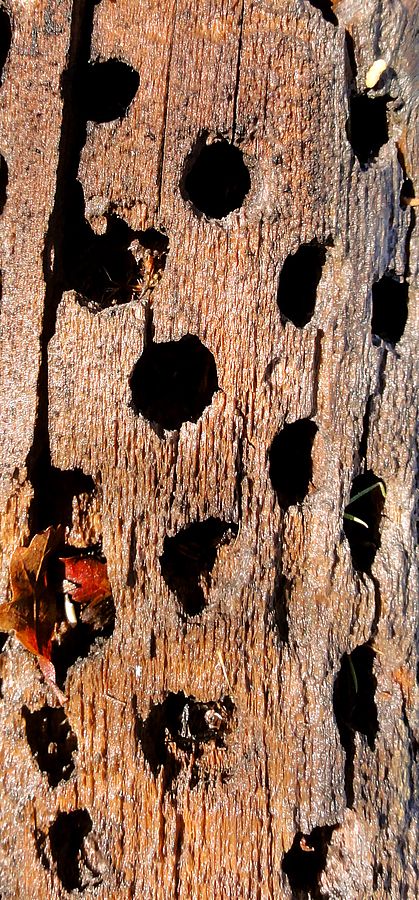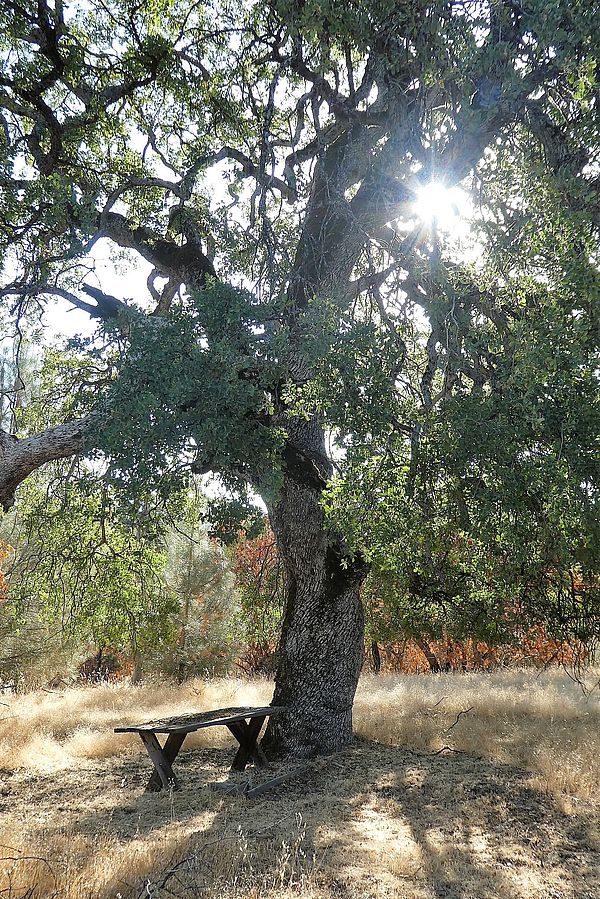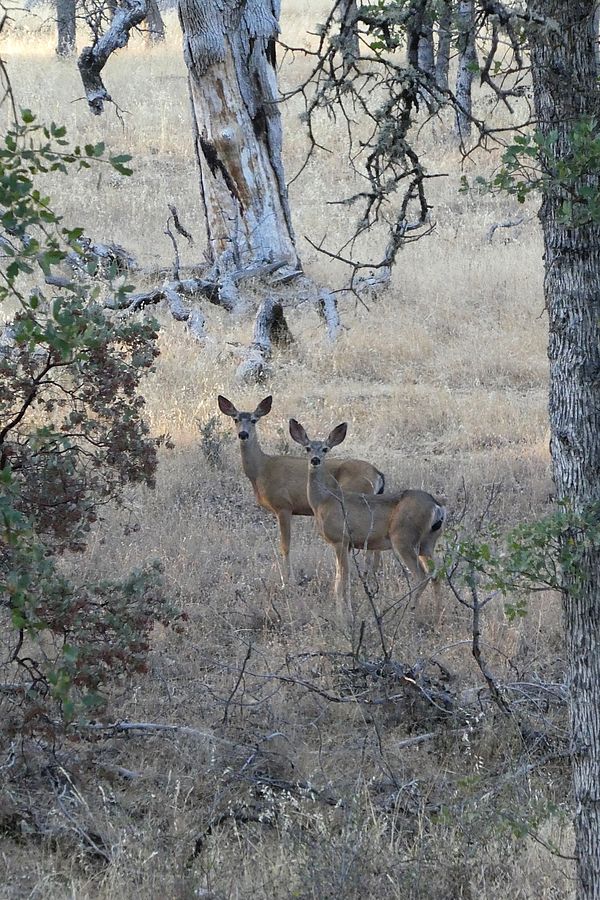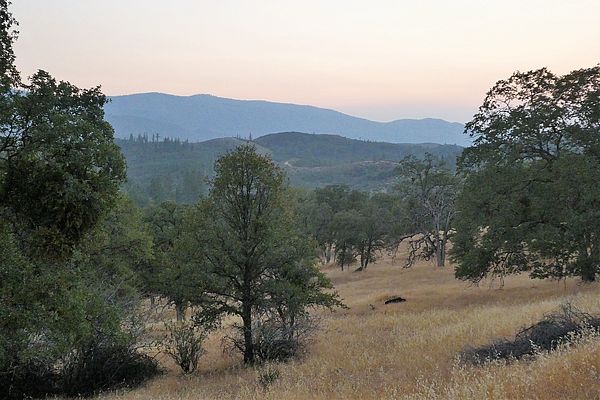People ask why I hold onto my land. After all, I live in Vermont, and it’s a full 3,000 miles away, in California.
It’s partly nostalgia. I grew up on this land, and I long for my kids to climb the same sprawling buckeye limbs and spend nights under the darkest skies and brightest stars I’ve ever known.
It’s partly memory. My dad, who died a decade ago, sank his heart and soul into the place. He kept records of rainfall, built trails, set wildlife cameras, pulled invasive star thistles, and spent countless days with his chainsaw, considering which trees would become firewood and which to leave for the raccoons and screech owls. Every inch of the parcel holds a piece of him.
It’s partly a plain and simple love. The golden hills. The quartz-encrusted slate. The ephemeral streams that run for just a couple weeks each spring. The April carpets of California poppies and baby blue eyes.
But I hold onto this land for another reason, too. It reminds me why I now live in Vermont, why I follow a career path of land stewardship and conservation. It keeps me grounded in who I am.
I will explain. But first, let me take you there.
If “California” conjures images of beaches and Hollywood actors, let’s just start over. My woodlot is very far from that California.
If “California” brings you to the San Francisco Bay Area, you’re a little closer. Now turn your back on the ocean and head toward the sunrise. Go past the land of computer chips, and drive right by the outlet malls. Pass the miles and miles of strawberry fields, garlic, and greens, the tidy rows of almond and peach trees, the lots packed with dairy cows and chickens. When the road at last begins to climb upward and the cultivated fields transform into cattle ranches, you’re almost there. Now keep going up, winding around the tight curves until you’re above the fog that settles at night in the valley, and the fields give way to scattered oaks. Pass an old gold rush town where rickety mining cabins still dot the hillsides, and prepare yourself for the cloud of red dust that will cover your car on the backroads. This is where you’ll find my land.
Don’t go too far up, though; we’re staying in the foothills, and in these parts, elevation drives everything. If you go farther, the snow sticks around for six months of the year and the scattered oaks become groves of fir and pine. Down here, it snows, but the snow never sticks around long. And while this area is called Midpines because of the scattered ponderosa and gray pines, it’s mostly oaks.
Managing a woodlot in this terrain is far from economical. We’re in a blue oak woodland, where thick, tall oat grasses grow wherever trees do not, dotted with dense thickets of buck brush. The terrain is rocky, and the soils are thin. The slow-growing blue oak features gnarled, twisted branches that rot from the inside out while the trees are still standing--trees that may not match the classic image of “old growth” but that have been growing untouched on these hillsides for hundreds of years. And in today’s market, they’re pretty worthless.
In terms of wildlife, this place is priceless. Blue oak woodlands are among the most ecologically diverse of California’s natural communities, and out here it’s as easy to find wildlife as it is to find people. Mule deer graze the hillsides. Coveys of quail congregate in the brush. Every inch of a standing, dead pine will be covered with rows of acorns stashed by woodpeckers. We’re too low here for the bears to hibernate; this is, in fact, their destination when some travel down from the mountains in winter. Raccoons, mountain lions, bobcats. Many of the summer’s resident birds head south for the winter, but just as many replace them, coming from higher ground to spend the winter here.
It used to be that my family managed this land mostly for wildlife and recreation. We cut trails for ourselves, and we piled the brush for the quail. Most of our neighbors did the same. These days, there is only one management goal on the minds of most: protecting ourselves against fire.
Now, don’t get me wrong. This has always been fire country. Summers are very dry, and lightening might start a fire naturally every 10-15 years or so. Historically, these fires were of low intensity, burning the grasses and underbrush in a mosaic pattern and only occasionally climbing into the crowns of the trees. This landscape is well adapted to these small fires, and many native plants even rely on fire to clear the ground for seed germination. For at least the last 3000 years, indigenous groups even increased the frequency of these fires to nurture favored species to grow. So landowners in this region have always lived with an awareness of fire, and in my memory, we always cleared for fire safety around the house on our own land. When you live in fire country, that’s just standard practice.
But it’s different now. In my childhood, there would be perhaps a week or two every summer when the sky turned grey and we could see helicopters flying overhead, delivering buckets of water or fire retardant to a fire that wasn’t too far away--but generally wasn’t terribly close, either. Most of these fires raged in the backcountry, and they grew large in part because they were just too remote to access. We thought those fires were scary, because occasionally they would get out of control, burn structures, and take lives.
Fires since then have come a long way in their ability to scare.
Why? First, there’s the practice of fire suppression. If this sounds counterintuitive, consider this: When lightening starts a fire every 10-15 years, the “easy” fuel is burned up--dead wood, underbrush, dry leaves and grass. Since fires have been suppressed since the 1950s, fuel has been building up over the same time period. When a fire does come through, there is now a lot of dry tinder to burn.
Fire suppression has brought other changes to the forest, too. Because even a small fire wipes out some of the vegetation, it reduces the competition for those that remain. Without these historic fires, our woodlands are denser than they would be otherwise, with more individuals competing for water. We also have somewhat different species growing than would be here in the presence of regular fires.
Next came the drought. Most of California has been in a drought since 2011. While much of the foothill vegetation can handle dry conditions, these have been exceptional years. Particularly when fire suppression has already encouraged denser forests, many trees get very stressed, and many more don’t make it. Those that don’t make it add to the fuel load.
Then came the pine beetles. While pine beetles are native to California, fire suppression (and the increase in forest density) followed by drought (and the many stressed trees) led to a perfect storm for these critters. In 2015-2016, an outbreak killed nearly every ponderosa pine in my neighborhood. In this community of Midpines, the local joke is that we’ll need to change our name, as we are no longer amid pines. The joke always falls a bit flat, though. We miss our pines. And in the fire equation, dead pines = lots of fuel = bigger fires.
By now, the whole world has heard about these fires. Massive fires. Fires that seem every year to break the record set by the last in terms of scale and intensity. These are not the fires of the past--those lightening fires that ignited every 10-15 years--that burned through the grass and moved on. These climb into the crowns, jump between trees, create their own weather systems, and become utterly unpredictable. Of the 20 largest fires in California history, 18 have occurred since 2000, and 12 of these have occurred just since 2015, according to the California Department of Forestry and Fire Protection.
These conditions are not unexpected. Climate change projections have been predicting this state of affairs for many years--the increased droughts, the outbreaks of forest pests, and the fires. All of it. And it’s only expected to get more extreme. California’s temperatures are expected to rise 5-9 degrees by 2100, with an increase in summer droughts (and winter floods), water shortages and heat waves. More fires are on the way. (See the latest California Climate Change Assessment for more information.)
In terms of management, fire was always on our minds, but our concern of the past was focused on houses and structures. We cleared brush and cut down the grasses close to the house, but that was generally thought to be enough. Over time, these guidelines changed to include brush management farther from the house, to reduce fuel loads on the entire property. That made sense, because if we weren’t letting lightning fires burn every decade or two, we needed to simulate this fire regime ourselves. So we cut down some underbrush, cleared away the dead wood, and made burn piles in the spring--the wet season--when it was safe to do so. The idea was to generate a woodland similar to what would be there in the presence of fire, while keeping our homes safe.
While the woodland structure looks very different, the practice isn’t unlike the ecological management many New England land managers are familiar with. To promote a resilient forest, we keep in mind the natural processes that drive a particular forest community. When possible, we leave nature to conduct these processes on its own. Sometimes, we mimic them ourselves, either to speed up the natural processes or to achieve our own goals while simultaneously maintaining forest health.
But in California today, it’s hard to know what ecological management looks like. With a rapidly heating and drying climate, the blue oaks and many other foothill species may simply not stick around. Blue oak regeneration is already becoming poor. The ponderosa pines--the ones hit so hard by the pine beetle--don’t appear to be coming back, at least at my elevation. In many parts of the foothills, the trees are being replaced by invasive grasses, and these blue oak woodlands are turning into savannah.
If my goal is to manage my woodland for resilience, what does this look like? Do I help the blue oaks, or let them pass? Should I be focused on regeneration of what’s here now, or prepare myself to manage a future grassland? I haven’t arrived at a satisfying answer. Change is hard.
The ever-changing fire safety guidelines don’t make this question any easier. At one point, we were told that to protect ourselves from the increasing intensity of fires, tree trunks should be spaced 20 feet apart, and all brush should be cleared. Some now call for tree crowns to be 20 feet from one another, and for the ground to be scraped to bare earth. I’m sure you can guess the suggestions for dead trees. Only the largest trees are retained, and everything else is cleared. While these guidelines were initially intended for the protection of houses--and in fact, fire districts require this type of clearing in order to have your home defended--some landowners are attempting the practice across wide expanses of woodland. I wonder how there will be a future forest at all if we keep only the largest trees, but the danger of fire is real. Today’s fires are that good at spreading, and you can never be too careful.
In fact, my land sits in a strip recently identified to be a critical fire prevention area. It’s located between the rural area’s biggest river and its biggest town. Fire-based forest management among my neighbors keeps not only us safe, but also the town. The 5,000 people of Mariposa are counting on us.
I’m still in the mindset of trying to mimic the natural processes that drive this natural community, but fire is certainly on my mind, too. Through a contract with the Natural Resources Conservation Service, a bunch of brush will be cut and chipped this winter, which should be beneficial for both woodland resilience and fire safety. For now, I’m keeping some of the standing, dead pines that are on the land but far from any houses. I’ll do the best I can to maintain species diversity and different age classes. But I can’t help but feel like my management decisions here are somewhat futile. If a large fire sweeps through, it’s pretty unclear what will come back. And even without the fire, the future seems almost as uncertain. Climate change isn’t a distant future worry in these parts; it’s present here and now. The climate train has left the station.
So… Why do I keep my land? Like I said, there are many reasons. But for one, it reminds me why I’m in Vermont, and why land stewardship here matters.
In Vermont, forest landowners are deep in conversations about what can be done now to help our forests and our wildlife adapt to a changing climate. We’re taking steps to increase forest resilience before our forests are in trouble. We’re trying our best to reduce the stresses on trees and wildlife. We’re planting trees to protect our watersheds. We’re taking steps to preserve wildlife connectivity, so organisms can move where they need to go. Here, forest landowners are even taking action steps to store more carbon in our forests.
Here, we can still be part of the solution. Here, it’s not too late.




